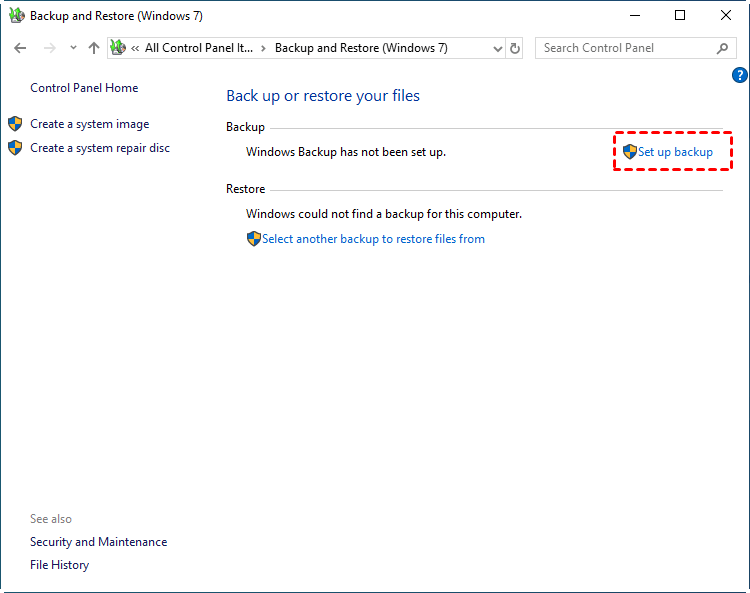

Or press Windows key +Q> type backup> More options.ģ.
#Backup files windows 10 update
Click Start> Settings> Update & Security> Backup> More options.

Connect to the external drive if you are using it as the backup destination.Ģ. Method 2: Windows Files Backup and Restore with File Historyįile History is a feature in the Windows operating system that allows users to automatically back up their files and folders. Browse and select backup files to restore, and choose the location of your storage device or other destinations.Ĥ. Access the Windows Backup and Restore> Restore my files.ģ. Connect to the external storage device with your backups included if you are using it.Ģ. The default setting is every Sunday 7:00 pm.Ħ.

Click Change schedule> check Run backup on a schedule> set the schedule. Or Let me choose for libraries and folders backup and whether to include a system image in the backup.ĥ. Select Let Windows choose to backup data files saved in libraries, on the desktop, and default Window folders and click Next. Choose your desired backup drive and click Next.Ĥ. Click Set up backup on the right of the panel. Or go to Settings> System> Storage> Advanced Storage options> Backup options> scroll down to look for a previous backup> Go to Backup and Restore (Windows 7).Ģ. Open Control Panel> System and Security> Backup and Restore (Windows 7). Or press Windows key +Q> type backup> turn to Backup and Restore (Windows 7). File Backup:Ĭlick Start> Settings> Update & Security> Backup> Backup and Restore (Windows 7).
#Backup files windows 10 windows 7
Window Backup and Restore is a backup feature since Windows 7 and is included in Windows 10/11, which can backup system files, files, apps, and other data. Method 1: Windows Files Backup and Restore with Windows Backup and Restore 3 ways to back up and restore files on Windows 10/11 will be given in this post for your reference. Therefore, it’s extremely important that companies run periodic file backups on Windows to ensure that there are always extra copies of critical data for data recovery. If they cannot access those files due to data corruption or malicious attacks, they are unable to continue operating. Many organizations rely on various files on the system to run different business operations such as payroll, human resources, sales, and more. But the files on the machine deserve your attention as well. You can back up Windows Server including all the server data and configurations to prevent the failure of the physical system or save data to various destinations such as NAS or external hard drives for multiplied security.


 0 kommentar(er)
0 kommentar(er)
